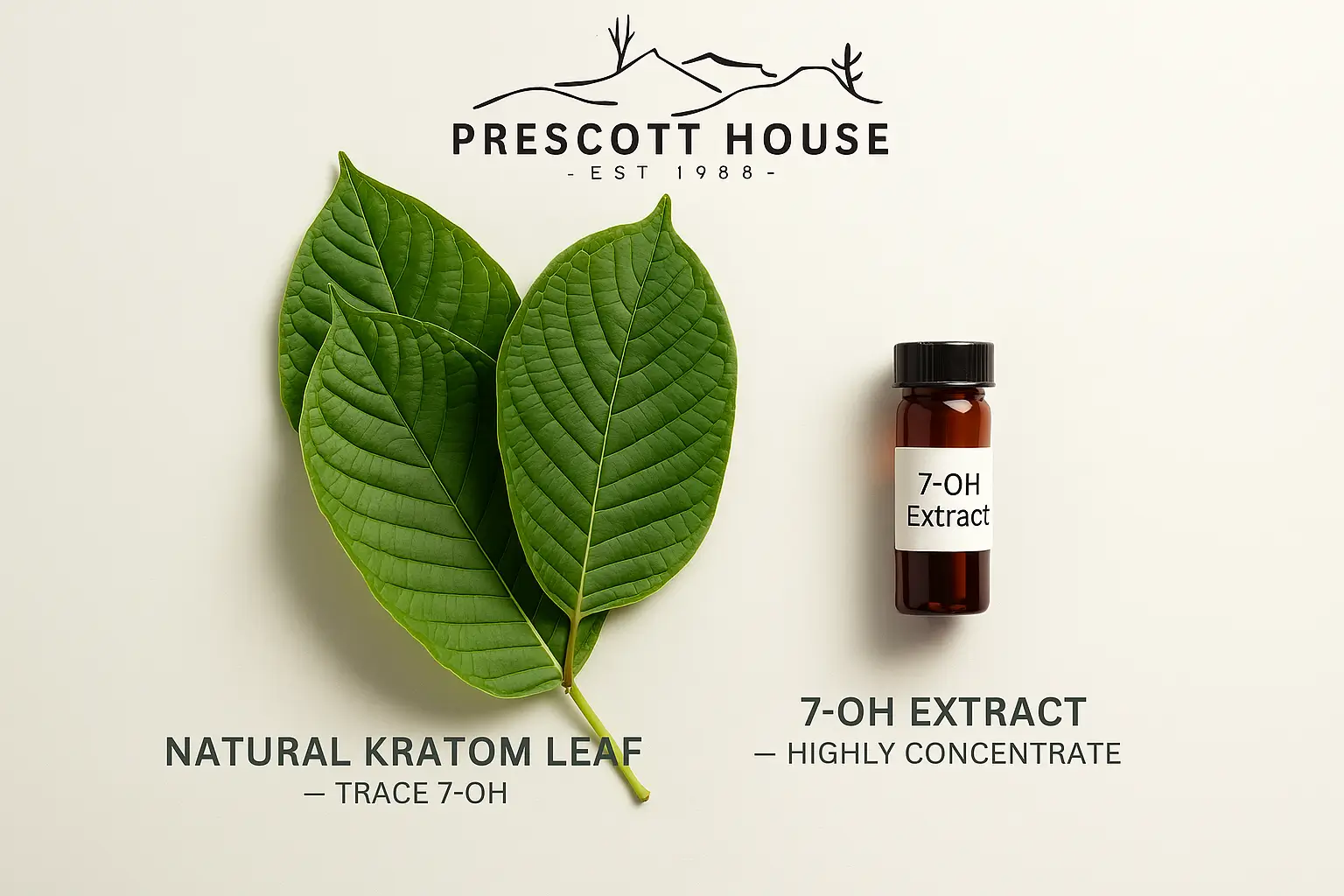Introduction: Understanding Hydroxyzine and Its Discontinuation
Picture this: you've been taking a simple antihistamine for months or years to manage your anxiety or sleep troubles. It's not a controlled substance, so surely stopping it should be straightforward, right? Wrong. While not typically considered addictive in the same way as opioids or benzodiazepines, stopping the commonly prescribed antihistamine hydroxyzine can lead to a challenging set of withdrawal symptoms that catch many people off guard. This guide will walk you through everything you need to know about safely navigating this process.
Hydroxyzine, sold under brand names like Atarax and Vistaril, is an antihistamine that has found its way into many medicine cabinets for reasons beyond treating seasonal allergies. Doctors frequently prescribe this versatile medication to treat anxiety, insomnia, nausea, and various allergic reactions. Its sedating properties make it particularly appealing for patients seeking anxiety relief without the dependency risks associated with benzodiazepines.
The withdrawal phenomenon occurs because your body becomes accustomed to hydroxyzine's presence over time. When you take any medication regularly, your brain adjusts its natural chemical balance to accommodate that substance. Suddenly stopping hydroxyzine disrupts this carefully maintained equilibrium, leading to what medical professionals sometimes call antihistamine discontinuation syndrome. Your brain essentially has to relearn how to function without the medication's influence.
Here's something we've learned at Prescott House through years of helping people navigate various substance dependencies: the body doesn't distinguish between "harmless" medications and more notorious substances when it comes to adaptation. If your system has grown accustomed to a chemical, removing it abruptly can create real challenges, regardless of the medication's reputation. For visiual learners and a comprehensive video watch this:
Common Hydroxyzine Withdrawal Symptoms
Hydroxyzine withdrawal symptoms can manifest as both physical and psychological challenges. The intensity and combination of symptoms vary significantly depending on your dosage, how long you've been taking the medication, and individual health factors. Understanding these symptoms helps you recognize what's happening and seek appropriate support.
Psychological Symptoms
The psychological aspects of hydroxyzine withdrawal often prove most distressing for people discontinuing the medication. Rebound anxiety frequently tops the list of concerns, sometimes appearing more intense than the original anxiety that led to hydroxyzine use in the first place. These anxiety episodes can escalate into full panic attacks, leaving you feeling overwhelmed and questioning your decision to stop the medication.
Sleep disturbances represent another significant challenge. Insomnia often strikes with a vengeance, making it difficult to fall asleep or stay asleep throughout the night. Your sleep patterns may remain disrupted for days or weeks, creating a cascade effect that impacts your mood and cognitive function.
Irritability and mood swings become common companions during withdrawal. You might find yourself snapping at loved ones over minor issues or experiencing emotional rollercoasters that feel completely out of character. Some people also experience periods of depression, restlessness, and a frustrating mental fog that makes concentration difficult.
Physical Symptoms
The physical manifestations of hydroxyzine withdrawal can feel remarkably similar to having the flu. Headaches and dizziness frequently occur, sometimes accompanied by nausea and vomiting that can make daily activities challenging. Many people report overwhelming fatigue that sleep doesn't seem to remedy, along with tremors that can affect fine motor skills.
Interestingly, some individuals experience increased itching during withdrawal, which makes sense given hydroxyzine's antihistamine properties. As the medication leaves your system, your body may temporarily overreact to allergens or irritants it previously managed with chemical assistance.
Muscle aches and joint pain can also emerge, creating discomfort that many describe as feeling like they're coming down with something. Some people experience heart palpitations or changes in blood pressure, though these symptoms typically remain mild and temporary.
Hydroxyzine Withdrawal Timeline: What to Expect
Understanding the typical withdrawal timeline helps set realistic expectations and reduces anxiety about the process. While everyone's experience differs, most people follow a predictable pattern when discontinuing hydroxyzine.
Days 1-3: The Initial Phase
Withdrawal symptoms typically begin within 6-12 hours after your last dose, though this can vary based on your individual metabolism and dosage history. The first three days often bring the most intense symptoms, particularly rebound anxiety and sleep disturbances. Many people find themselves caught off guard by how quickly symptoms appear.
During this initial phase, your body is actively adjusting to the absence of hydroxyzine's histamine-blocking and sedating effects. You might experience waves of anxiety, restlessness, and physical discomfort that can feel overwhelming. Sleep may become elusive, and concentration difficulties often peak during this period.
At Prescott House, we've observed that people who understand this timeline feel more prepared to handle these challenging first days. Knowing that symptoms are temporary and expected can provide crucial psychological support during the most difficult period.
Days 4-7: The Adjustment Period
As you move into the second phase, symptoms typically begin to stabilize, though they may still feel significant. Sleep patterns often start showing gradual improvement, though full restoration may take longer. Anxiety levels may fluctuate throughout the day, but the intense panic episodes common in the first few days usually begin to subside.
Physical symptoms like headaches and nausea often improve during this period, though fatigue may persist. Some people experience what feels like emotional numbness or detachment as their brain chemistry continues rebalancing without the medication's influence.
Weeks 2-4: Recovery and Stabilization
Most people find significant relief by the second week, with symptoms continuing to diminish gradually. Sleep quality typically improves markedly, though some individuals may still experience occasional restless nights. Anxiety levels generally stabilize closer to pre-withdrawal baselines, though stress management remains important.
The third and fourth weeks often bring noticeable improvements in energy levels and cognitive function. Mental fog lifts, concentration improves, and emotional regulation becomes more manageable. However, it's important to remember that full recovery can take longer for some individuals, particularly those who used higher doses or took hydroxyzine for extended periods.
Safe Tapering Strategies: Minimizing Withdrawal Symptoms

The key to minimizing hydroxyzine withdrawal symptoms lies in gradual dose reduction rather than abrupt cessation. While hydroxyzine isn't considered as dependency-forming as controlled substances, your body still benefits from a gentle transition away from the medication.
Working with Your Healthcare Provider
Before beginning any tapering schedule, consulting with your prescribing physician or a qualified healthcare provider is essential. They can assess your individual situation, review your medical history, and create a personalized tapering plan that considers your specific needs and circumstances.
Your healthcare provider will likely recommend reducing your dose by 25-50% initially, then making additional reductions every 3-7 days based on how you respond. Some people tolerate faster tapers, while others need more gradual approaches. There's no universal "right" speed – the best tapering schedule is one you can follow successfully without experiencing severe symptoms.
Common Tapering Approaches
A typical tapering schedule might look like reducing a 50mg daily dose to 37.5mg for one week, then to 25mg the following week, followed by 12.5mg, and finally discontinuation. However, these numbers aren't set in stone – some people need smaller reduction increments or longer intervals between cuts.
For individuals taking hydroxyzine multiple times per day, healthcare providers often recommend reducing the number of daily doses before reducing individual dose sizes. This approach can help maintain some medication coverage throughout the day while beginning the withdrawal process.
Some healthcare providers recommend switching to a liquid formulation during tapering, as this allows for more precise dose adjustments. Liquid hydroxyzine can be measured exactly, enabling tiny reductions that might not be possible with tablets or capsules.
Managing Withdrawal Symptoms Naturally
While tapering reduces withdrawal severity, additional strategies can help manage symptoms more effectively. These natural approaches work alongside medical supervision to support your body through the transition.
Sleep Hygiene and Relaxation Techniques
Since sleep disturbances rank among the most challenging withdrawal symptoms, establishing excellent sleep hygiene becomes crucial. Create a consistent bedtime routine, keep your bedroom cool and dark, and avoid screens for at least an hour before sleep. Consider relaxation techniques like progressive muscle relaxation or guided meditation to help quiet an anxious mind.
Deep breathing exercises can provide immediate relief during anxiety episodes. The 4-7-8 technique – inhaling for 4 counts, holding for 7, and exhaling for 8 – activates your body's relaxation response and can help manage acute anxiety symptoms.
Physical Activity and Nutrition
Regular, moderate exercise helps regulate mood and improve sleep quality during withdrawal. Walking, yoga, or swimming can provide natural anxiety relief while supporting your body's healing process. However, avoid intense exercise that might increase anxiety or stress levels.
Proper nutrition supports your nervous system during recovery. Focus on whole foods, adequate protein, and complex carbohydrates that provide steady energy. Limit caffeine and alcohol, as both can exacerbate anxiety and sleep problems during withdrawal.
Conclusion
Navigating hydroxyzine withdrawal doesn't have to be a journey you take alone or without proper guidance. Throughout this comprehensive guide, we've explored the reality that even seemingly "harmless" medications like antihistamines can create genuine withdrawal challenges when discontinued improperly. The key takeaways are clear: hydroxyzine withdrawal symptoms are real and can be significant, but they're entirely manageable with the right approach.
Remember that the severity and duration of your withdrawal experience largely depend on how you approach discontinuation. Abrupt cessation – going "cold turkey" – dramatically increases your risk of severe rebound anxiety, sleep disturbances, and physical discomfort. In contrast, a carefully planned tapering schedule, developed with medical supervision, can minimize these symptoms and make the transition much more comfortable.
The natural management strategies we've discussed – proper sleep hygiene, regular exercise, stress reduction techniques, and nutritional support – aren't just helpful additions to your withdrawal plan; they're essential tools for long-term wellness. These approaches help your body heal while providing sustainable alternatives to medication-based anxiety and sleep management.
Most importantly, this process represents an opportunity for growth and renewed health. While the initial days of withdrawal may feel challenging, thousands of people successfully discontinue hydroxyzine every year and go on to manage their anxiety and sleep concerns through healthier, more sustainable methods.
At Prescott House, we understand that medication discontinuation often raises questions about alternative approaches to mental health and wellness. Whether you're concerned about dependency issues with other substances or seeking comprehensive support for anxiety and sleep management, professional guidance can make all the difference. Our experienced team specializes in helping individuals navigate complex health transitions while building lasting coping skills.
If you're considering discontinuing hydroxyzine or need support managing withdrawal symptoms, don't wait until you're struggling. Reach out to your healthcare provider today to discuss a personalized tapering plan, and remember that seeking additional support from mental health professionals isn't a sign of weakness – it's a wise investment in your long-term wellbeing. Your journey toward medication-free wellness is not only possible but achievable with the right support and strategies in place.













